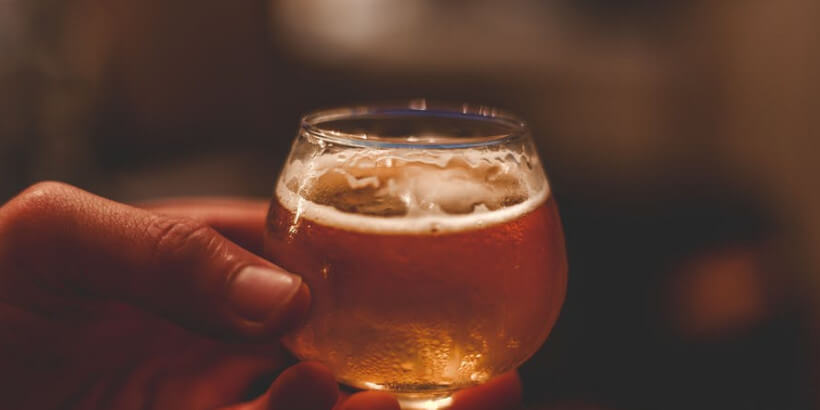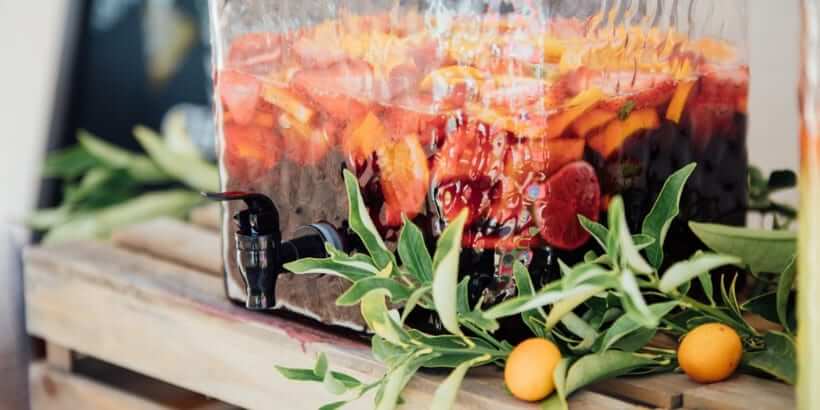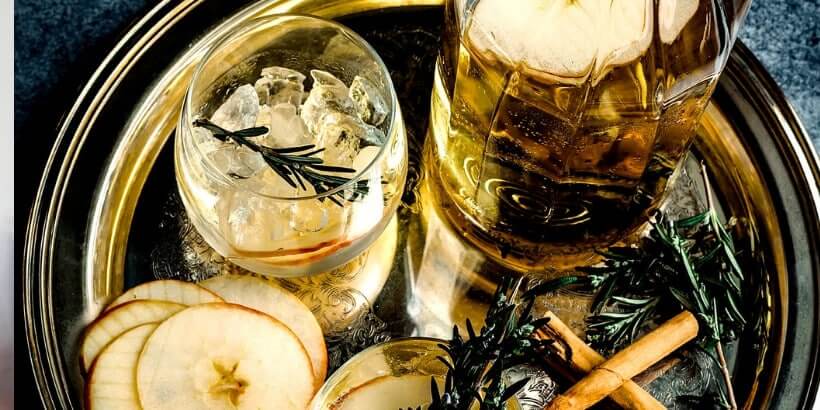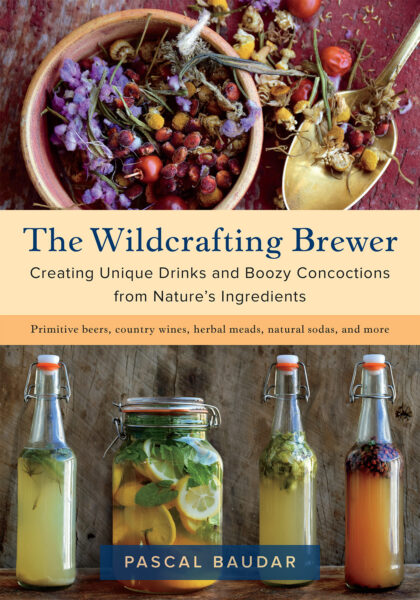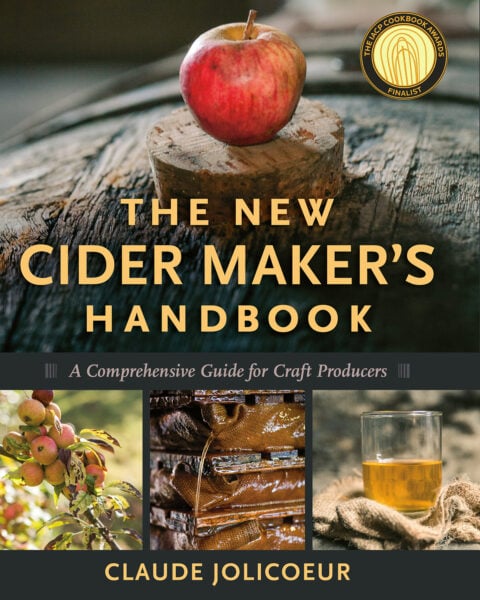Bring on the Seasonal Brews: Drinks to Pair With Thanksgiving Dinner
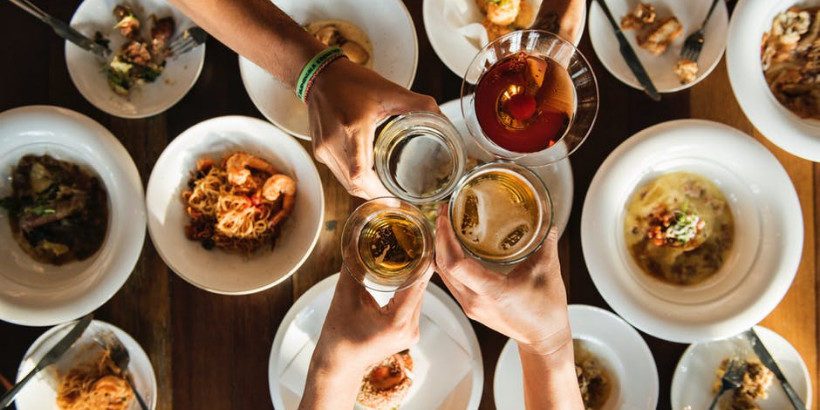
Looking for a refreshing drink to pair with Thanksgiving dinner? From cider to sangria to pine soda, one of these seasonal brews is bound to be the perfect fit for you and your family.
NOTE: Make sure to prepare these drinks ahead of time so you’re not working for longer than planned on Thanksgiving day!
The following recipes have been adapted for the web.
Ginger Beer from Brew Beer Like a Yeti
What follows is based on what I have found works best for a simple ginger beer. You may wish to adjust the amounts of ginger to taste. I like ginger, but it can easily become overpowering. I found that my early attempts were flavorful, but the ginger didn’t really come through.
The proportions for this recipe are what I recommend for a beer with a pronounced but not overwhelming ginger flavor.
Ingredients
For 1 gallon (4L)
- 1 gallon (4 L) spring water or filtered tap water
- 1 pound (0.5 kg) brown sugar, light brown sugar, or cane sugar
- 2–3 ounces (57–85 g) fresh gingerroot, chopped or bruised (double, triple, or even quadruple if you like a strong ginger flavor)
- Juice of ½ small lemon, 2 ounces (60 mL) lemon juice, or 1 ounce (28 g) cream of tartar (a common substitute for citric acid)
- Brewing yeast, ale yeast, bread yeast, or barm
Procedure
- Bring the water just to a boil in a stockpot.
- Stir in the sugar until fully dissolved.
- Bruise the ginger lightly by squeezing it with your finger or pressing with a spoon or butter knife and drop it into the pot. Add the lemon juice or cream of tartar.
- Reduce the heat to medium-low and shut it off after half an hour.
- Let the liquid cool to milk-warm (warm to the back of your hand) and add the yeast; then leave overnight with a cloth covering the pot (I should note that sometimes I just sprinkle the yeast directly into the jug during the next step with similar results).
- Strain the solids out and pour into a 1-gallon (4 L) jug or other container with an airlock.
- Allow to ferment fully, prime with sugar or honey, and bottle.
Many early recipes call for bottling this shortly after it begins fermenting, making for a carbonated, low-to-no-alcohol “soda” more akin to a modern ginger ale. If you prefer to do this, use about a quarter of the sugar, skip step 6, and go straight to bottling.
Just be extra vigilant that you open, vent, or refrigerate the bottle within no longer than 24 hours. The built-up CO2 can cause anything from light fizzing, to gushing, to exploding bottles if left too long unattended.
Refrigeration will slow fermentation significantly. You can safely keep this in the refrigerator for weeks or months if you want but it’s best drunk young. If you bottle in plastic soda or water bottles, you can gauge carbonation by monitoring the expansion of the plastic. When the bottle is firm it’s ready.
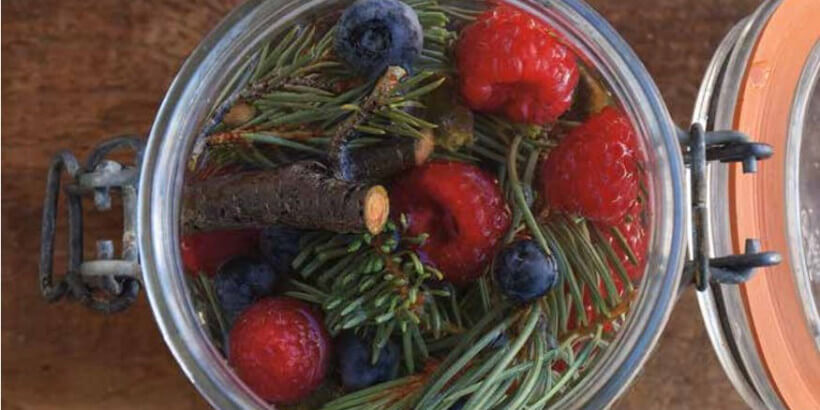
Mountain Raspberry/Blueberry Soda from The Wildcrafting Brewer
This is probably the prettiest soda I’ve ever made, and it’s super tasty as well. This soda is less about a specific location than it is about the season. Here in Southern California, fall is a time when everything turns into a desert, which means that as a forager I usually have to go to higher altitudes where the temperature is lower to look for fresh flavors.
From my perspective, the local mountains in late fall are all about pines, fir, and spruce, but if you visit your local grocery store, this is also a time when berries are extremely abundant. With this recipe, I wanted to celebrate what nature and local organic farmers can offer in autumn, and it was a great excuse for spending a whole day outdoors. This is very much a “concept” drink to celebrate the season.
Ingredients
- Raspberries and/or blueberries
- Pinyon pine, cut into small sections (1 inch/2.5 cm or so) to infuse flavors
- White fir branches
- Springwater
- 1⁄2 cup (100 g) of sugar for 1⁄2 gallon (1.89 L) of springwater
- Wild yeast starter or champagne yeast
Procedure
- Clean your fermentation vessel and place your fresh ingredients in it.
- Add springwater (don’t use tap water, which may contain chlorine) and sugar.
- There are no real rules for this simple fermentation: Just pack 80 percent of your jar with what you have collected/purchased. I use around 50 percent berries and 50 percent pine/fir. Cut the tips of the needles to help extract the flavors.
- Add yeast.
- Screw on the lid of your container, but not too tight; you want fermentation gases to escape. You can also cover it with clean cheesecloth or a paper towel.
- Stir gently two or three times a day with a clean spoon. Taste as you go, and judge by flavors. When you like what you drink, you can stop. It may take 3 or 4 days or more. I usually don’t leave the fruits in the liquid for more than 3 days (some get mushy).
- Strain and pour the liquid into recycled plastic soda bottles or glass swing-top bottles. Check the pressure after a day or so.
- When you’re satisfied with the level of carbonation, place your soda in the fridge and enjoy it the next day. I like to drink it within a week.
Harvest Sangria from The Fruit Forager’s Companion
Serves 12
You know it’s a party when there’s a giant pitcher of sangria. It’s one of my favorite beverages for entertaining because you can throw all kinds of odds and ends in there, as long as they contribute to a harmonious flavor. Good sangria is all about balance. It should be a little puckery, a little boozy, and just sweet enough.
Always make sangria ahead of time, for two reasons: (a) It gives the punch time to mellow, and (b) it’s one less thing for you to worry about as you scurry around getting ready for a party. Leftover sangria is awesome.
I like a lot of fruit chunks in my sangria. It’s a striking internal garnish, it leaks more and more flavor into the punch as it sits, and when all the punch is gone, you have a boozy fruit salad to pick at later when everyone is kinda drunk. Nourishment!
Ingredients
- 3 oranges, halved pole to pole and thinly sliced
- 2 firm but ripe pears or apples, diced
- ½ cup (120 ml) brandy
- 4–6 tablespoons granulated sugar, divided
- 1 cup (240 ml) ruby port
- ¾ cup (180 ml) apple cider, optional 3 tablespoons lime juice
- 3 tablespoons lemon juice
- 2 (750 ml) bottles dry but fruity red wine
Procedure
- In a 1-gallon (4 L) pitcher or glass jar, combine the oranges, pears, brandy, and 4 tablespoons of the sugar.
- Stir until combined, and let sit for an hour.
- Add the port, cider, lime and lemon juice, and wine, and stir to combine, making sure all of the sugar is dissolved. Taste and add more sugar, if needed.
- Refrigerate for at least 2 hours. Taste again before serving, adding more sugar or citrus juice, if needed.
- Leftover sangria will keep, refrigerated, for 3 to 4 days.
Also try with: Plums, peaches, apricots, cherries, loquats, strawberries, blackberries, raspberries, or whatever sweet and luscious fruit is around at the time. The citrus, however, is non-negotiable.
Pear Cider with Thyme-Infused Tea from The Occidental Arts & Ecology Center Cookbook
Fresh-pressed cider and other fruit juices can be way too sweet to drink straight. Diluting with herbal tea cuts the cloying sweetness and makes for a refreshing afternoon beverage.
Ingredients for 4–6 servings
Makes around 2 quarts
- 1⁄2–11⁄2 quarts water, to taste
- 4–6 large sprigs thyme or other fresh garden herb such as lavender, lemon balm, lemon verbena, basil, mint, shiso, or even rose petals
- 1 quart fresh-pressed pear (or apple) cider, or 1 cup frozen concentrate*
Ingredients for 30–40 servings
Makes around 2 Gallons
- 1⁄2–11⁄2 gallons water, to taste
- 4–6 large sprigs thyme or another fresh garden herb such as lavender, lemon balm, lemon verbena, basil, mint, shiso, or even rose petals
- 1 gallon fresh-pressed pear (or apple) cider, or 1 quart frozen concentrate*
Procedure
- Bring the water to a boil, turn off the heat, and add the herbs.
- Cover and steep for 30 minutes.
- Strain and allow to cool. This can be done ahead.
- In your serving pitcher or dispenser, add the fresh juice or concentrate.
- Stir in the tea 1 quart at time.
- Dilute to taste.
- Chill or serve at room temperature as desired. If you plan to add ice, leave it a little stronger and save the extra tea for another time.
- Garnish with a sprig of fresh herb.
*To make room in your freezer, you can make your own concentrate from fresh apple or pear cider: Freeze the fresh-pressed juice in large plastic 1-gallon jugs.
Defrost halfway, leaving a core of ice down the center, and pour off the liquid concentrate—the natural sugars and flavor compounds melt first and diffuse out into the sides. Discard the ice. Pour the concentrate into a smaller container and refreeze. Commercial frozen juice concentrate may need higher dilution.
Recommended Reads
Recent Articles
Chances are, you’ve seen cattails growing on the edge of your local lake or stream at least once or twice. Instead of just passing these plants, try foraging for and cooking them to create delicious seasonal dishes! The following excerpt is from The New Wildcrafted Cuisine by Pascal Baudar. It has been adapted for the…
Read MoreGarlic mustard: while known as “invasive,” this plant can be consumed in its entirety and has great nutritional value. Plus, the garlic-flavor is a perfect addition to any recipe that calls for mustard! The following are excerpts from Beyond the War on Invasive Species by Tao Orion and The Wild Wisdom of Weeds by Katrina…
Read MoreOh, honeysuckle…how we love thee. If only there was a way to capture the sweet essence of this plant so we could enjoy it more than just in passing. Luckily, foraging and some preparation can help make that happen! Here’s a springtime recipe that tastes exactly like honeysuckle smells. The following excerpt is from Forage,…
Read MoreIntroducing…your new favorite brunch dish! This whole broccoli frittata is packed with fresh, wildcrafted flavors that are bound to help you start your day off on the right foot. The following is an excerpt from The Forager Chef’s Book of Flora by Alan Bergo. It has been adapted for the web. RECIPE: Whole Broccoli Frittata…
Read MoreWondering where to forage for greens this spring? Look no further than hedges, which serve as natural havens for wild greens and herbs! The following is an excerpt from Hedgelands by Christopher Hart. It has been adapted for the web. Food from Hedges: Salads and Greens Let’s start by looking at all the wild foods…
Read More

